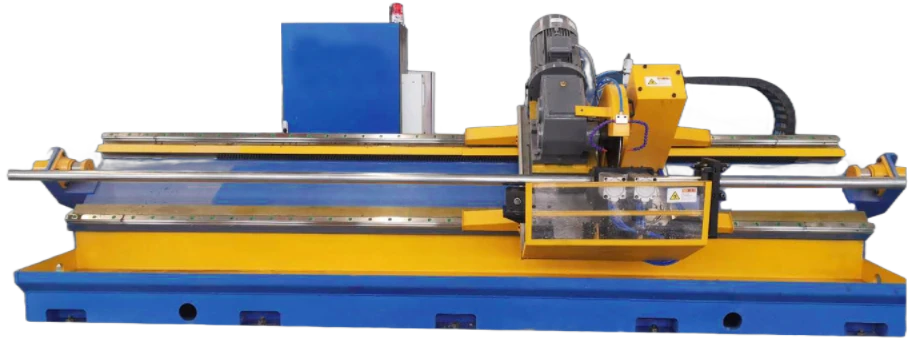Innovative Rolling Door Machine for Enhanced Security and Efficiency in Modern Spaces
The Rise of Rolling Door Machines A Modern Solution for Security and Convenience
In today's fast-paced world, the need for efficient solutions that enhance security while providing convenience is more critical than ever. Among these innovations, rolling door machines have emerged as a popular choice for various industries, ranging from retail and warehouses to garages and storage facilities. This article examines the features, benefits, and applications of rolling door machines, highlighting their significant contributions to enhancing security and overall operational efficiency.
What is a Rolling Door Machine?
A rolling door machine, also known as a rolling door operator or motorized roll-up door, is a mechanical system designed to open and close rolling doors automatically. These machines utilize electric motors to operate doors that roll up and down, providing a secure barrier while ensuring quick and efficient entry and exit. Rolling doors are often constructed from durable materials such as steel or aluminum, offering enhanced protection against unauthorized access and environmental elements.
Key Features of Rolling Door Machines
1. Automated Operation One of the standout features of rolling door machines is automation. With the touch of a button or the use of a remote control, users can effortlessly open and close doors, streamlining operations in high-traffic areas.
2. Security and Durability Rolling doors are designed to withstand physical threats. Made from tough materials, they provide a robust barrier against vandalism, break-ins, and adverse weather conditions. The machines themselves are equipped with safety features to prevent accidents during operation.
3. Space Efficiency Unlike traditional swing doors, rolling doors do not require additional space to open. This makes them ideal for areas with limited space, such as warehouses and small shops, where maximizing floor area is essential.
4. Versatility Rolling door machines come in various sizes and styles, making them suitable for different applications. Whether it’s a small retail store or a large industrial facility, there is likely a rolling door machine designed to meet the specific needs of the business.
rolling door machine

5. Energy Efficiency Many modern rolling door machines are designed with insulation properties, helping to maintain temperatures within buildings. This not only enhances comfort but also contributes to energy savings, particularly in facilities where climate control is crucial.
Applications of Rolling Door Machines
Rolling door machines find applications in numerous sectors. Here are some notable examples
- Retail Stores In retail environments, rolling doors are often used for securing entrances after hours. Their automatic operation allows for quick access during business hours, whilst reinforcing safety when the store is closed.
- Warehouses and Distribution Centers High-traffic environments like warehouses benefit from the speed and efficiency of rolling door machines, allowing for swift loading and unloading of goods while maintaining security.
- Industrial Facilities Manufacturing plants often use rolling doors to separate different areas, ensuring that only authorized personnel can access certain sections of the facility while protecting valuable equipment and inventory.
- Parking Garages Automated rolling doors in parking facilities control access, providing a secure entry point and enhancing safety for vehicles and pedestrians alike.
Conclusion
As businesses continue to seek solutions that enhance security, improve operational efficiency, and offer convenience, rolling door machines stand out as a premier choice. Their automated features, durability, and versatility make them suitable for a wide range of applications, from retail to industrial settings. With technology continually evolving, we can expect further advancements in rolling door machines, making them even more efficient and integrated into smart building systems. In a world where security and convenience are paramount, rolling door machines represent a modern solution that skillfully balances both needs.
-
High Frequency Straight Seam Welded Pipe Production Line-BzZhou Xinghua Machinery Equipment Manufacturing Co., LTD.|line pipe steel&welded gas pipeNewsJul.30,2025
-
High Frequency Straight Seam Welded Pipe Production Line-BzZhou Xinghua Machinery Equipment Manufacturing Co., LTD.|High Precision&Automated SolutionsNewsJul.30,2025
-
High Frequency Straight Seam Welded Pipe Production Line - BzZhou Xinghua Machinery Equipment Manufacturing Co., Ltd.NewsJul.30,2025
-
High Frequency Straight Seam Welded Pipe Production Line-BzZhou Xinghua Machinery Equipment Manufacturing Co., LTD.|Precision Welding, High EfficiencyNewsJul.30,2025
-
High Frequency Straight Seam Welded Pipe Production Line|BzZhou Xinghua|Precision Welding&EfficiencyNewsJul.30,2025
-
High Frequency Straight Seam Welded Pipe Production Line - BzZhou Xinghua|Precision Engineering&EfficiencyNewsJul.30,2025


